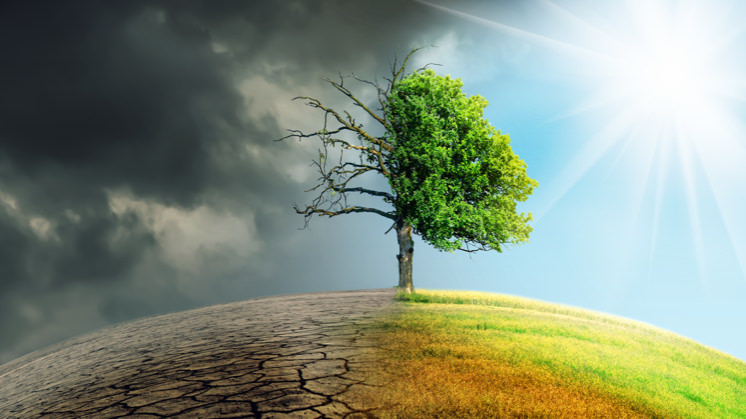Mitigating and adapting to climate change
Adapting to climate change: what will the Earth look like in 2030?
Climate change is a threat to the future of our planet, but there is still time for us to adapt to it and mitigate its effects. Below, we take a look at the measures being put in place and travel in time to see what the world will look like if we are to halt global warming.

Global temperature records are being continually broken. If last July was the hottest month in history, according to the World Meteorological Organisation (WMO), the five-year period 2015-2019 is about to become the hottest of all time. Scientists say that this type of phenomenon is becoming more probable and more persistent, and this is partly down to climate change.
Vulnerability to climate change
Climate change is a reality that is affecting millions of people across the world, especially the most vulnerable, by increasing the frequency and virulence of the extreme meteorological phenomena that cause material damage and population displacement. One only has to look back as recently as 2018, when natural disasters led to the internal displacement (ie migration within the same country) of 17.2 million people, according to the Internal Displacement Monitoring Centre (IDMC).
Global warming is also the cause of the greatest environmental crisis in history, due to the unprecedented speed with which it has unfolded. Since 1880, the average global temperature has increased by 0.85°C, sea levels have risen by 19cm and the Arctic has lost 1.07 million km2 of ice per decade, according to the Intergovernmental Panel on Climate Change (IPCC).
Differences between mitigating and adapting to climate change
Until recently, the international community had focused on trying to limit CO2 emissions. But based on the latest data, it has diversified its efforts, promoting climate change adaptation and mitigation policies to help minimise the effects of this phenomenon, whose consequences are already being seen across the world. Both strategies complement each other, and although they present different challenges, the end goal is the same.
The difference between climate change mitigation strategies and climate change adaptation is that mitigation is aimed at tackling the causes and minimising the possible impacts of climate change, whereas adaptation looks at how to reduce the negative effects it has and how to take advantage of any opportunities that arise. Where mitigation strategies fail to reach emissions containment targets, climate resilience will be key to lessen the impacts of climate change and pave the way for our survival, along with the rest of the Earth's inhabitants.
Measures for mitigating and adapting to climate change
Climate change is an uphill battle, but with our combined efforts and suitable mitigation actions we can minimise the damage it causes:
Improving energy efficiency and opting for renewable energy over fossil fuels.
Promoting public transport and sustainable mobility by increasing the numbers of journeys in towns by bicycle, reducing the number of flights and taking more trips by train or in shared cars.
Promoting ecological industry, agriculture, fishing and livestock farming, food sustainability, responsible consumption and the 3Rs rule (reduce, reuse, recycle).
By taxing the use of fossil fuels and CO2 emissions markets.
Alongside mitigation measures to stem global warming, measures for adapting to climate change also need to be encouraged:
Erecting buildings and infrastructure that is safer and more sustainable.
Replanting forests and restoring damaged ecosystems.
Diversifying crops so that they are better able to adapt to changing climates.
Investigating and developing innovative solutions to prevent and manage natural catastrophes.
Developing action plans for climate emergencies.
What will the Earth look like in 2030 if we defeat climate change?
If the measures for mitigating and adapting to climate change are successful, by next decade — according to the World Economic Forum (WEF) — we could achieve day-to-day scenarios such as:
Mobility
Most journeys will be made by train or shared electric car, equipped with algorithms that will select the best route in order to reduce consumption and maximise the number of passengers. In towns, we will choose to walk, travel by bike or use public transport in order to save time and improve our quality of life through a reduction in noise and in traffic jams.
Architecture and town planning
We will live in houses fed by renewable energy and scarcely any concrete buildings will be built. There will be fewer parking zones in our streets and more urban allotments, parks and gardens.

Food
We will eat fruit and vegetables, while meat, dairy and fish will no longer be staples in our diet.
Agriculture
The reduction in livestock farming will have a positive effect on reforestation, freeing up more land for the cultivation of food for human consumption.
Consumption
We will share more goods and services, purchase less and reuse more, and recycle almost everything. Single-use plastics will have disappeared and packaging will be easier to sort and recycle.




